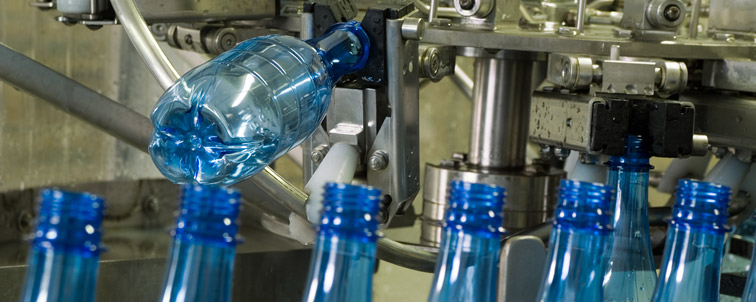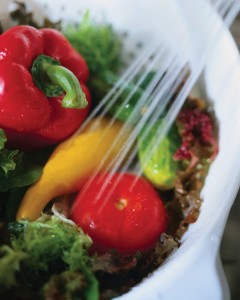
A variety of systems and chemicals are used to disinfect water used in the food processing industry. All of which have considerable limitations.
Anolyte has been shown to be a promising alternative decontamination technique with a strong bactericidal effect. This technique has been suggested as a valuable disinfection tool for wash water sanitation in the minimally processed vegetable industry.
By understanding and using Anolyte to disinfect equipment, wash water as well as the produce itself, food processing companies can provide an environmentally safe solution.
 This technology differs from other physical decontamination technologies in that next to the direct decontamination, a residual disinfection capacity is also generated. The result is the on-site destruction of even refractory organics without the generation of residues. The importance of the maintenance of water quality during washing helps to minimize the potential microbial contamination of processing water and subsequent cross contamination of the product.
This technology differs from other physical decontamination technologies in that next to the direct decontamination, a residual disinfection capacity is also generated. The result is the on-site destruction of even refractory organics without the generation of residues. The importance of the maintenance of water quality during washing helps to minimize the potential microbial contamination of processing water and subsequent cross contamination of the product.
In general, it could be assumed that the cleaning action of the washing process removes microorganisms from the product and the sanitizing agent eliminates them in suspension. Washing and disinfection using various chemicals have economic and environmental implications mainly because of the large amount of water used. Therefore, considerable effort and cost is needed to assure that the water quality is adequate for its intended use, both at the start and the end of all washing processes. The use of Anolyte and Catholyte in the vegetable CIP are capable of cleaning and disinfecting efficiently the process water, the product and the facility itself. The properties of these solutions will assist in reducing the wastewater rates and would have no impact on the environment.
Anolyte can be used for:
- CIP and COP solutions on site – replacing detergents and disinfectants
- HACCP compliance and digital integration
- Dosing of process water – becomes in situ disinfectant
- Ice dosing with Anolyte – becomes disinfectant as it melts
- Spraying of conveyor belts
- Used in produce wash water
- Used in to replace a variety of chemicals presently used to sanitise and clean facilities, surfaces, equipment and produce
- Increase shelf life
- Enhance run length times before CIP, and replace harsh chemicals
- Ensure staff health and safety
Wash water quality deteriorates rapidly during produce washing and it usually contains high organic loads including soil, leaves, and other debris as well as microorganisms associated with the produce. By dosing Anolyte directly into the system the ability to maintain a constant FAC throughout the washing process can be achieved.
Anolyte provides full spectrum biocidal disinfection and sterilization capabilities in eliminating pathogens. Test conducted on Anolyte has documented its effectiveness in the elimination of E.Coli, Salmonella spp., Pseudomonas Aeruginosa, Listeria and Legionella Pneumophila. Anolyte has proven to be a much more effective Anti-Microbial Agent against E.Coli 0157H:7 than Chlorinated Water, Ozone, Chlorine Dioxide or Chlorine relative concentrations. The food processing and bottling industries use huge volumes of water for a wide variety of purposes throughout the processing chain. However, the consistent factor is the requirement for clean water.
IQ ECA Technologies’ solutions namely Anolyte and Catholyte, can also rightly claim to be organic in origin as it uses only natural and sustainable inputs of water and salt to generate natural biocides.
Using Anolyte in food and beverage processing facilities achieves 5 major functions:
- It disinfects plant and machinery ensuring that there is no reservoir of microbial contamination
- It disinfects and cleans the pipe networks, destroying biofilm which is the environment in which microbes thrive
- It disinfects the water itself ensuring clean and sterile supplies
- It disinfects bottles, containers and packaging
- It cleans and sterilises food preventing mould, bacterial propagation thereby extending shelf life